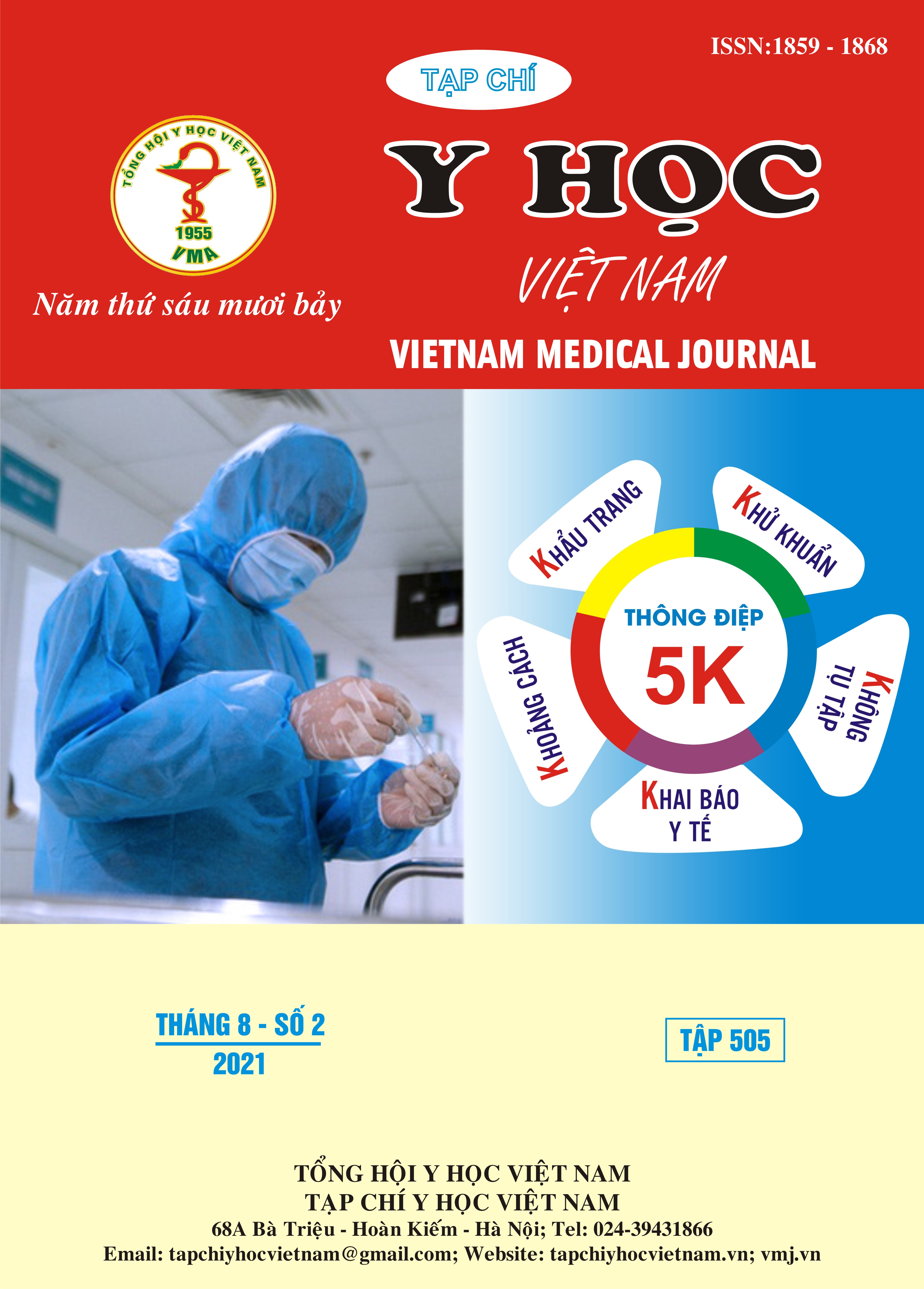SOME ASSOCIATED FACTORS IN CHILDREN UNDER FIVES WITH DEFICIENT/INSUFFICIENT VITAMIN D IN AN LAO, HAI PHONG IN 2016
Main Article Content
Abstract
Objective. The study was well done to estimate some associated factors between deficient/insufficient vitamin D and acute respiratory infection in children under 5 in An Lao, Hai Phong in 2016. Subjects and Methods. Subjects included 406 pairs of children and their mother. Method was a cross-sectional study. Results. In the final model of multivariate regression, some asscociated factors with vitamin D deficiency included acute respiratory infection (OR=2.65), gestational age at birth less than 37 weeks (OR=1.74), and maternal poverty or under average income (OR=2.27). Conclusions. Acute respiratory infection was an indepentent factor associated with vitamin D deficiency. It needs to supplement vitamin D for children under 5 to reduce the incidence of acute respiratory infection.
Article Details
Keywords
Acute respiratory infection, An Lao District, Associated factors, Children under 5, Vitamin D deficiency
References
2. Nguyễn Xuân Hùng (2020), Thực trạng suy dinh dưỡng thấp còi và hiệu quả can thiệp ở trẻ 12 đến 36 tháng tuổi tại huyện Kim Động, tỉnh Hưng Yên năm 2017”, Luận án tiến sỹ Y học, Trường đại học Y Dược Hải Phòng.
3. Trần Quỵ (2013), “Nhiễm khuẩn hô hấp cấp tính”, Bài giảng nhi khoa tập 1 – Nhà xuất bản y học Hà Nội, trang 380-389.
4. Adebola E. Orimadegun et al (2020), “A systematic review and meta-analysis of sex defferences in morbidity and mortality of acute lower respiratory tract infections among african children”, J Pediatr Rev, 8(2):65-78. doi:10.32598/jpr.8.2.65.
5. Adrian R Martineau et al (2017), “Vitamin D supplementation to prevent acute respiratory tract infections : systematic review and meta-analysis of individual participant data”, BMJ 356:i6583, doi:10.1136/bmj.i6583.
6. Balsam Qubais Saeed et al (2021), “Vitamin D deficiency and insufficiency among university students: prevalence, risk factors, and the associattion between vitamin D deficiency and episodes of respiratory tract infections”, Risk manag Healthc Policy, 14:2733-2744, doi:10.2147/RMHP.S308754.
7. Chowdhury R et al (2017), “Vitamin D dificiecy predicts infections in young north Indian children: a secondary data analysis”, PloS One, 8;12(3):e0170509.
8. David A McAllister et al (2019), “Global, regional, and national estimates of pneumonia morbidity and mortality in children younger than 5 years between 2000 and 2015: a systematic analysis”, Lancet Glob Health, 7(1):e47-e57.doi:10.1016/S2214-109X(18)304408-X.
9. Holick MF and Tai C Chen (2008), "Vitamin D deficiency: a worldwide problem with health consequences", Am J Clin Nutr. 87 (4): 1080S - 1086S.
10. Jabulani R. Ncayiyana et al (2021), “Prevalence and correlates of vitamin D deficiency among Young South Africa Infants: A birth cohort study”, Nutrients, 13(5): 1500, doi: 10. 3390/nu13051500.
11. Swathi Chacham et al (2020), “Prevalence of vitamin D deficiency among infants in Northern India: a hospital based prospective study”, Cureus, 12(11): e11353, doi: 10.7759/cureus.11353.
12. Vicka Oktaria et al (2021), “Vitamin D deficiency and severity of pneumonia in Indonesian children”, PloS One, 16(7):e0254488, doi:10.1371/journal.pone.0254488.
13. Zhaojun Chen et al (2021), “Vitamin D status and its influence on the health of preschool children in Hangzhou”, Front Public Health, 9:675403, doi: 10.3389/fpbh.2021.675403.


